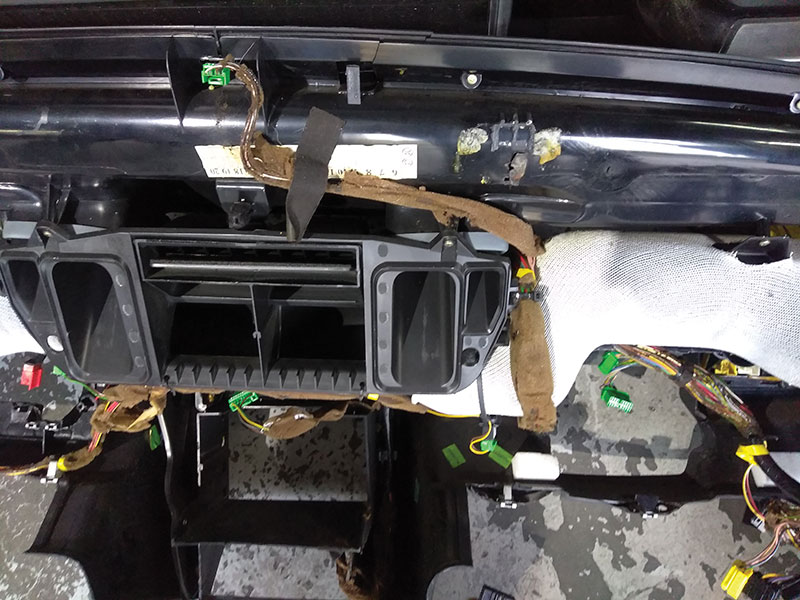
This article is part of a continuing series covering common problems that can arise on Volvos with higher mileage.
Just like all other car makes, Volvos have some common wear problems as these cars age, and similar models tend to experience some of the same problems. If you work on a lot of Volvos in your shop you have probably seen some of these common problems.
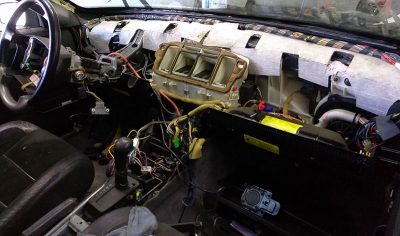
LOUD “POP†OR “CRACK†NOISE OVER LARGE BUMPS OR POT HOLES (1993-1997 850 SERIES CARS)
A lot of good old Volvo 850 series cars that are still on the road and still showing up at your shop are starting to show their age.
20 to 25 years old and still rolling strong, these cars can develop a lot of rattles, especially the wagons.
You can fix a lot of these interior rattles by just tightening loose screws and brackets or identifying parts that are rubbing together and isolating them with felt tape.
Volvo has a great service bulletin for fixing some of the interior noises on 850 series cars, SB 85-820-1297
But if you get one of these Volvos in your shop with a customer that complains about a loud “POP†or “CRACK†noise coming from the dash area when the car hits a pot hole or large bump, this Volvo may have a broken dash board mount or mounts where the main dash board assembly connects to the firewall.
This problem is more come in 850s that are driven in warmer climates and are normally parked on the street.
Over the years of sun and heat exposure, the plastic at the front of the dash begins to get brittle and starts to crack.
If the dash is just rattling over bumps you probably just have to tighten the four mounting bolts under the wiper motor cowling.
When the dash mounting points break, you will know it; when you drive the car over a hard bump the noise is very sharp and loud.
Your customer will really have to love their Volvo to repair this problem, because it is going to be expensive to fix.
The whole dash assembly will have to be removed including the steering wheel and both air bags, and in most cases the main dash assembly will have to be replaced.

Volvo 850 – 1993 -1997Â (SAS) (PAIR) AIR PUMP FAILURES NON-TURBO
When a higher mileage Volvo 850 comes into your shop with a Check Engine light on and the ECU has stored one or more codes related to the air pump system (SAS), there is a good chance that this car might need a new air pump and air pump check valve. As these 850s get older, the diaphragm in the air pump check valve can crack and leak internally.
The SAS check valve is exposed to heat and vibration constantly, because it is mounted right above the exhaust manifold. These valves are built to work in this type of harsh environment, but they do have a life span.
Most of the SAS check valves that fail have over 100K miles on them, but if the car is driven in extreme temperatures constantly, the part’s life may be shortened.
When the SAS check valve diaphragm is damaged, it can allow some exhaust gases to leak through it and flow backwards through the inlet hose that comes from the air pump. As we all know, engine exhaust can contain quite a bit of water vapor as part of the normal combustion process, especially when the car is cold.
Volvo’s secondary air injection system operates like most AIR systems that use an electrically-powered vane-type pump. This system is designed to reduce hydrocarbon and carbon monoxide emissions during cold starts, and to speed the heating of the Three-Way Catalytic Converter (TWC ) by pumping fresh air into the exhaust manifold when the engine is cold.
The extra oxygen helps to “after burn†the unburned hydrocarbons that remain in the exhaust when the engine is cold. This also makes it possible to increase injection time and retard ignition timing, which will increase exhaust temperatures, speeding the activation of the TWC.
In the Volvo 850 the AIR system operates like this: when engine coolant temperature is between 10 degrees C and 30 degrees C (50 degrees F – 86 degrees F) and the car is running, then the auxiliary air system is activated 20 seconds after the engine is started. Once the system has been activated it runs for 45 to 120 seconds depending on the coolant temperature.
The problem occurs when exhaust gases and water vapor are allowed to leak into the electric air pump. When this happens, the water can soak into the air pump’s motor and windings, causing the pump to short out and rust internally.
The easiest way to check for this problem is to take the top off the air cleaner housing and check the inlet hole for the air injection system. In most cases you will see traces of rusty water around the hole, and in some cases, on the air filter element itself.
You could just replace the air pump check valve and air pump, but it is always better to recommend replacement of the air pump, air pump check valve, air pump relay and air pump switching valve to ensure a proper repair.
WEAKENED POSITIVE BATTERY CABLES CAUSING HIGH RESISTANCE, VOLTAGE DROP AND LOW CHARGING SYSTEM VOLTAGE
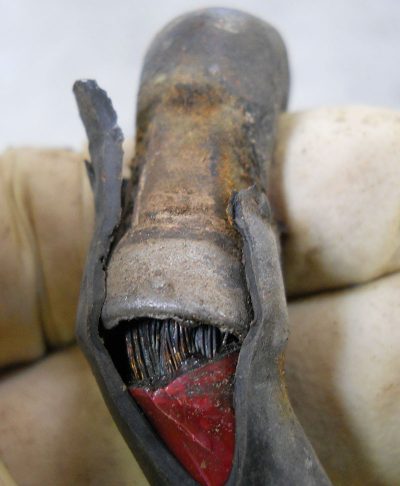
This condition is most commonly seen in Volvos like the 1993-2000 850/S70 series with over 100K miles on them.
When an older Volvo comes into your shop with a charging system problem or a dead battery, you should always make checking the battery cables part of your initial testing. Of course we all know that, but in a lot of cases these cables will not always act up during testing, especially when the car is cold, when they will often pass a voltage drop test. And in most cases, the battery clamps will be tight and not show any visible signs of wear or corrosion.
When you get one of these Volvos in the shop, you will notice that when the car is cold it may be charging normally, but as the car warms up two things will happen: the charging voltage will slowly begin to drop, and the positive battery clamp will begin to heat up. So be careful not to touch the positive clamp with your bare hands when these cars are running and warmed up. This is because the high resistance in the battery’s cable and connector can cause the battery clamp to get very hot!!
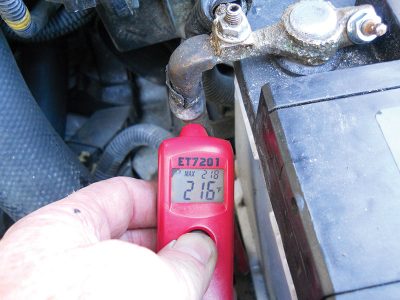
Along with a volt meter, you can use a non-contact infrared thermometer to measure the positive battery clamp voltage and temperature as the car warms up. If the car has one of these failing positive cables, you will see the voltage slowly drop as the clamp temperature rises.
What happens to these cables over time is, moisture can build up inside the cable and start to cause corrosion to develop inside the battery clamp where the cable is inserted and crimped. You usually can’t see this corrosion because the cable connection is covered with heavy-duty heat shrink. This corrosion causes resistance, the resistance causes heat, the heat causes the clamp to expand, which causes a poor connection, and the poor connection causes voltage drop.
Isn’t science cool?
Sometimes as these clamps cool the metal can contract, re-establishing the connection, and the car will suddenly start charging normally again. That’s why these cables are often missed during the initial charging system testing. Remember, when working with batteries and battery acid, always take safety precautions, and wear eye protection and gloves. Car batteries contain sulfuric acid that can give off Oxidized Hydrogen (HHO) gas. This is the reason batteries can catch fire. Oxidized Hydrogen is combustible, even though it usually takes about 570 degrees C (1058 degrees F) to ignite it.
FUN FACT
A lit cigarette burns between 1100 degrees F and 1600 degrees F, so don’t smoke around car batteries!
If you have a Volvo that needs to have this cable replaced for any reason, you should also recommend replacement of the battery at the same time because all that heat and stress can cause permanent damage to the battery.
1993-2000 Volvo 850/S/V 70 SERIES FUEL PUMP SENDING UNIT AND FUEL LEVEL SENSOR SEAL LEAKS.
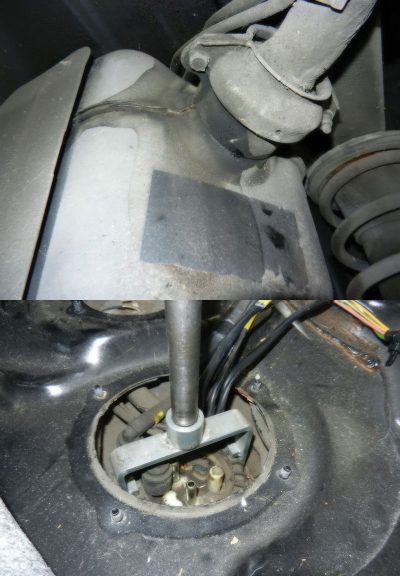
The replacement procedure for the fuel sending unit and sending unit seal requires Volvo special tools: 999-5486 and 999-5885.
If a customer brings in one of these early Volvos with a complaint of a fuel smell after filling up the fuel tank, the car may have a deteriorated or loose fuel pump sending unit or fuel level sensor seal.
Over many years and miles of rough roads, expansion and contraction from hot and cold weather can cause the fuel tank level sensor and fuel pump assembly caps to loosen and allow fuel vapor and even raw fuel to escape though the seals on the top of the fuel tank, where the sending units are installed. Â
Even if the customer does not notice any fuel tank problems, you should make inspection of the fuel tank and hoses part of your regular inspection procedure, because fuel leaks should always be taken seriously. Â
To inspect for this problem, put the car up on the rack and use a flashlight to inspect the surface of the fuel tank. You will probably notice signs of old fuel leakage and, in some cases, wet fuel, usually on the right side of the tank coming down from the top, above the filler neck connection.
There are a few ways to confirm that the leaks are coming from the sender and fuel pump seals. You could take the car to a gas station, and fill the tank to the top to check for the size of the leak by watching how much gas spills onto the ground. But there are safer, cleaner and more environmentally friendly ways to confirm this problem. You can remove the access panel above the fuel pump sender and you will usually see obvious signs of fuel seepage. In some cases the holding rings will be loose enough for you to be able to turn them by hand.
In this case don’t be tempted to just tighten the caps, because the seals are probably compromised. Its best to replace both the fuel sender and fuel pump seal with new seals from Volvo. If you have a smoke machine with an adapter to thread into the fuel filler neck, you can pump smoke in and usually see a leak. Remember to use only a smoke machine that is specifically designed for EVAP system testing; you don’t want to cause damage by applying too much pressure to the fuel tank.
These Volvos rarely have fuel leaks, but always inspect the tank for damage and the fuel lines for leakage. Shops in areas where salt is used on roads for snow removal have seen cars with steel fuel and brake lines rusted through.
1999-2004 VOLVO S/V 40 UPPER ENGINE WIRE HARNESS INTERMITANT FAILURE CAUSING MULTIPLE ISSUES.
Some of the first generation of Volvos S/V 40 series, also known as the X40 platform cars, that were made from 1999-2004, are starting to show their age.
These Volvos were the first ones that were manufactured outside of Sweden, but don’t hold that against them, the ones that were well serviced are still rolling strong.
Among a few other aging issues that commonly occur with this model, a few shops have seen problems stemming from a worn upper engine wire harness.
This short wire harness starts at a connector at the fire wall and connects to the two ignition coils and the VVT solenoid.
If you get one of these 1999-2004 S/V 40s in your shop with a camshaft reset valve code (ECM-61 or POO14) stored in the ECM, make sure you make inspecting the wire harness part of your initial diagnosis.
Of course the most common reasons for a camshaft reset valve code on these cars are low oil, low oil pressure, oil contamination and worn or clogged VVT solenoid valves.
Here is the description of how the ECM-61 Code is “NORMALY†generated.
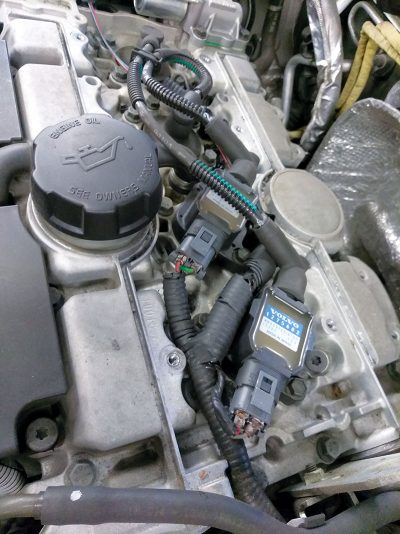
Each time that the engine is switched off the camshaft pulley sets itself in the locked position. The control module checks that the camshaft pulley leaves the locked position when the engine is started again. Diagnostic trouble code (DTC) ECM-61 is stored if the control module detects that the camshaft pulley is in the locked position.
Substitute value: None.
Possible source:
- Low oil pressure in the engine.Â
- Blocked oil ducts for the camshaft reset valve.Â
- Defective camshaft reset valve.
- Fault symptom[s].Â
- Malfunction indicator lamp (MIL) lit.
When you begin your diagnostics on one of these Volvos you should start with the basics, check the oil level and condition.
Check the car’s service records if possible to find out if the customer serviced their car on a regular basis or not.
If the driver of the Volvo in question is one of those drivers that is “not†servicing their Volvo on a regular basis, the camshaft valve code may have been set for one of the usual reasons listed above.

You know those customers that only bring the car in when they have more than 3 warning lights on the dash or the ones that call and say they need an oil change because the oil light just came on.
Of course there is an old school trick to find out if the car has had its engine oil changed on a regular basis or not, just look at the bottom of the oil filler cap. If it’s clean, this Volvo has been loved; if it has a lot of baked on crud built up on it, this Volvo probably has not been loved on a regular basis.

But this article is about the wire harness, not oil changes, the point is that a worn upper engine harness has been known to cause this code to be generated even if all the other components in the VVT system are operating flawlessly.
This is because the upper engine wire harness on these Volvos runs over the top of the cam case and operates in a very hostile environment. After years of heat and vibration the harness insulation can become brittle and start to crack, causing intermittent shorting and implausible data to be sent to the ECU.
The other problems that can be caused by these worn harnesses are unexplained misfire codes and, in states that require emissions testing, there have been cases were a shorting harness has caused the car not to be able to run and complete the component monitor in the ECU.
So inspect those wires and connectors, you will usually see that the wire insulation right near the coil connections is rock hard and crispy.
The replacement harness from Volvo has blue connectors at the coils and the original harness has black.
Download PDF

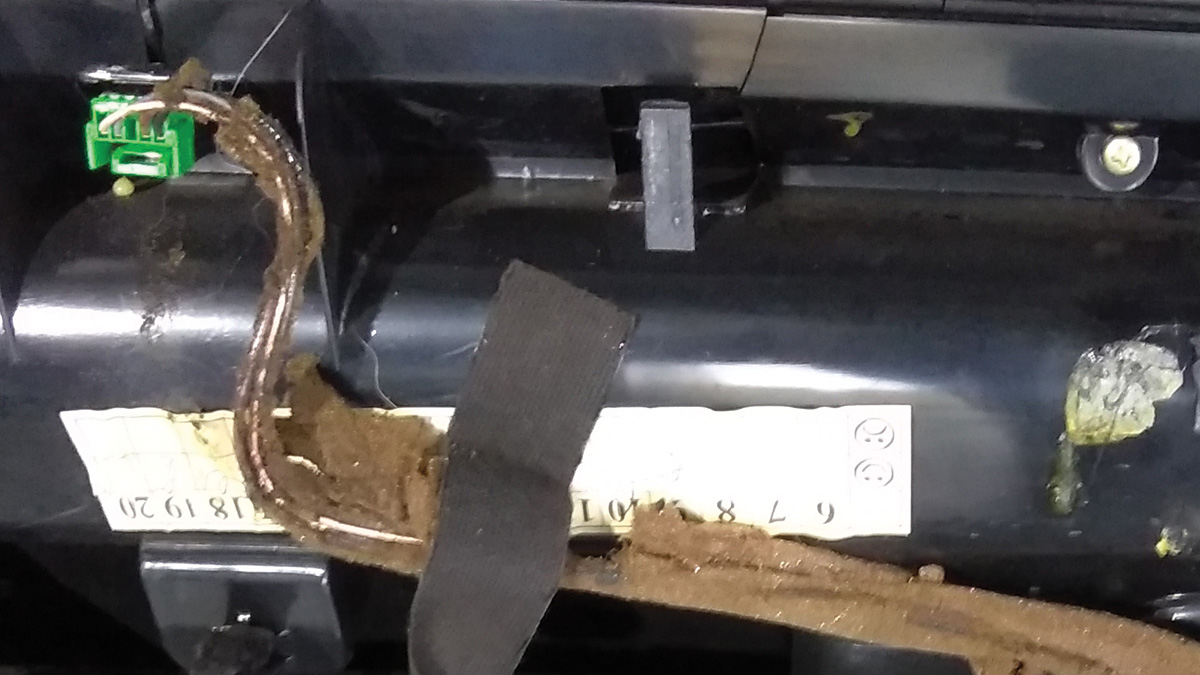

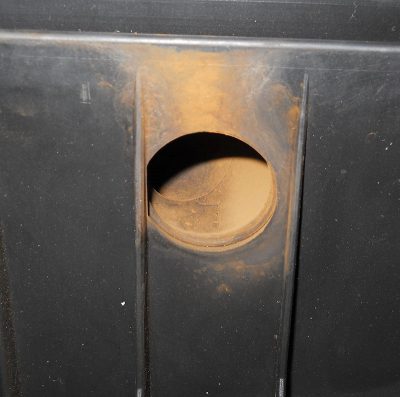





0 Comments